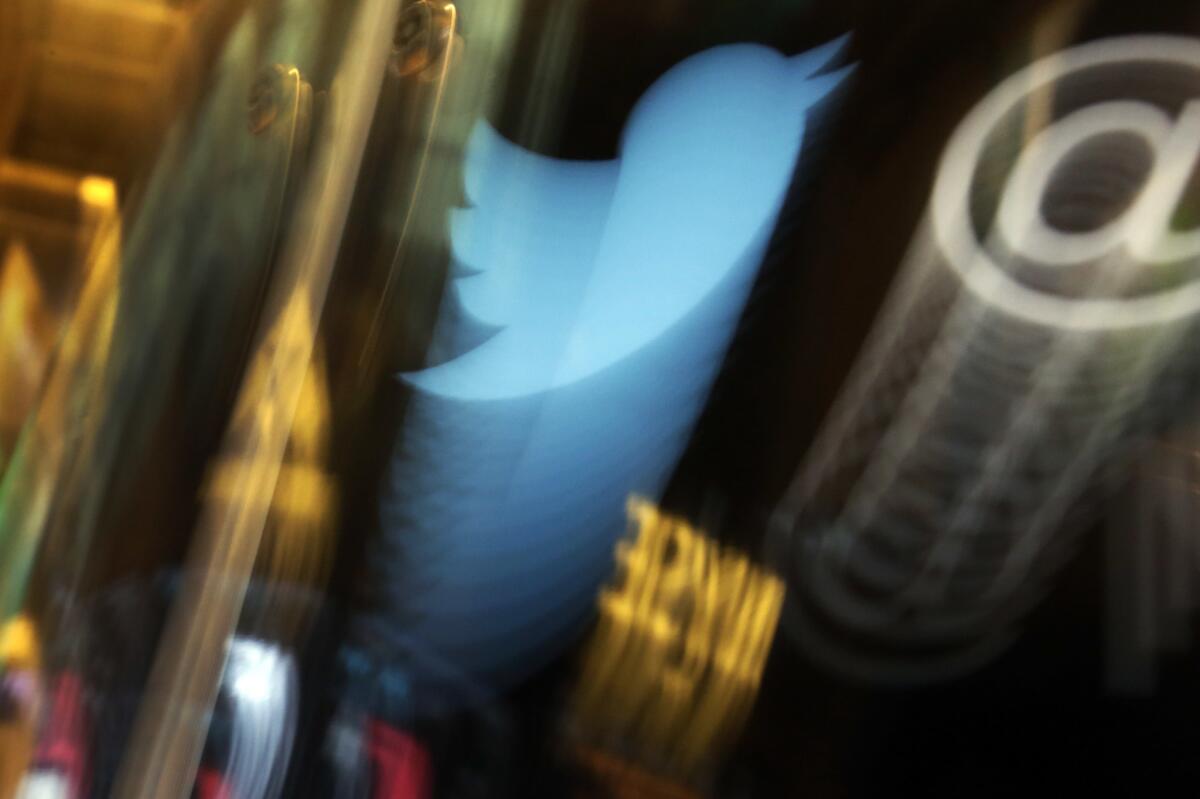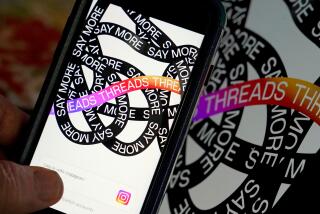Twitter to slash 9% of its workforce and kill Vine as it tries to eke out a profit

When a slew of photo and video apps popped up about five years ago, Twitter Inc. pounced.
Larger rival Facebook reportedly outbid it by hundreds of millions of dollars for rapidly growing Instagram, but Twitter managed to grab the yet-to-launch Vine app for a few million dollars in stock and cash.
What’s transpired since then, culminating Thursday with a disclosure that Twitter would shut down Vine and lay off more than 300 employees, points to the unrealized potential that’s squeezed the San Francisco company into a corner.
Twitter has produced nine straight quarters of slowing revenue growth compared with the prior-year quarter. Monthly active users, the company’s key usage measurement, has stagnated for the last year. Several other firms, including Salesforce.com Inc. and Walt Disney Co., have considered and then rejected the opportunity to acquire Twitter in recent weeks.
Now, the company is retrenching in hopes of producing an annual profit for the first time next year.
“Once a company gets to our scale and growth, it’s important to drive toward margins and profitability,” Chief Financial Officer Anthony Noto said during a call with analysts. “It’s an important milestone to reach for investor appeal.”
Twitter vowed to help users preserve existing posts on Vine, but is stopping further development, which could free employees to work on live-video technology. It declined to say how many layoffs would be associated with Vine, which many employees had already left.
Four years ago, Facebook and Twitter allowed their respective image-sharing acquisitions to operate independently. Vine turned out to be popular once it launched. A tool to produce and view six-second videos that repeated endlessly, Vine resulted in something unlike anything else in the App Store.
Comedians got creative, and the results generated millions of views. Online-born celebrities shared quick bites from their lives to millions of followers. Sports fans loved short highlights that cut straight to the pivotal moment. In December, the National Basketball Assn. became the first organization to reach 1 billion views on Vine.
But Vine’s limitations turned off most consumers and advertisers, some of whom found YouTube, Snapchat and Instagram simpler and more lucrative.
“To me, Vine was always a bit too quirky for mass user appeal,” said Debra Aho Williamson, principal analyst at advertising industry research firm EMarketer. “With so many other places to put digital video advertising, Vine just didn’t take root for marketers.”
Facebook also kept bolstering editing options, including video filters and text animations; Vine hasn’t strayed far from its original version.
The percentage of people in the U.S. using Vine in one 7Park Data research panel has dipped below 1% from a peak of near 4% two years ago, while Instagram commands about 30%, up from about 21%.
The fall came as Twitter endured widespread executive departures and shifting management strategies that technology analysts say slowed innovation.
But to the early Vine investor who introduced the app to Twitter co-founder and current CEO Jack Dorsey, that’s an unfair narrative.
“Not every merger or acquisition is Instagram or YouTube,” former SV Angel investor David Lee said. “If you look at the Twittersphere today, it’s clear [Vine’s three co-founders] built something that resonated with people, and not a lot of people can say they did that.”
Still, the Vine trio — all of whom had left or were fired by earlier this year — griped Thursday about what could have been for their creation. Dom Hofmann posted on Twitter that he was “busting out the bourbon.” Rus Yusupov warned “Don’t sell your company!” Colin Kroll linked to an old Vine post featuring a fiery explosion and sorry note.
Analysts piled on frustrations about the parent company.
Twitter said it would cut 9% of its 3,900 employees, mostly in sales and marketing as teams separately addressing large and mid-sized clients merge. After an initial hit of $10 million to $20 million in severance costs, the layoffs could bring as much as $100 million in annual savings, according to one estimate.
But that’s not enough. Twitter’s usage of stock to pay employees remains “excessive,” Wedbush Securities financial analyst Michael Pachter said.
User interface changes and initiatives such as streaming live video of NFL games are helping boost ad sales at Twitter, but not quickly enough to justify its valuation, said RBC Capital Markets analyst Mark Mahaney. Twitter shares closed Thursday at $17.40, up 11 cents, but well below the initial issue price of $26 when the company went public nearly three years ago.
“Twitter believes it can command premium ad pricing, but its dramatic ad [revenue] deceleration doesn’t support that,” Mahaney wrote in a note Thursday.
Since returning a year ago to the helm, Dorsey has focused on design adjustments in hopes of encouraging more activity. Some of the changes, such as automatically surfacing the most interesting posts people might have missed between visits to the app, have been welcomed by many of its 317 million monthly users.
Twitter reported third-quarter revenue of $616 million, up 8% from a year earlier, and a quarterly loss of $103 million.
Analysts say that the company remains a takeover target, with an acquisition inevitable if the share price further tumbles.
Dorsey declined to address the acquisition discussions beyond saying the company’s board of directors is committed to maximizing long-term value.
With those discussions in the rearview mirror and budget cuts in progress, questions about Twitter now may shift to the company’s spending on the rights to stream NFL games, political events, news shows and other video.
Twitter executives said they’re trying to make each content deal profitable on its own, but it’s unclear whether that’s achievable as apps fight for exclusive rights to prized programming and drive up prices.
Noto described live video as integral to the future, noting there was record usage during the three days Twitter streamed election debates. Videos also have been Twitter’s largest and fastest-growing ad-revenue generator in recent months.
“We would need to have debate every day on Twitter to have it be a meaningful impact across a quarter, and that’s where we are headed,” Noto said.
Additional tweaks to the service are coming. Dorsey said November would bring updates to the way Twitter handles concerns about harassment, bullying and other unwanted interaction between users. He didn’t go into detail about those changes or about expected experimentation with the app’s posting process.
Although Twitter has not enacted the revolutionary changes some technology analysts have called for, the company’s adjusted profit margins have shown improvement through the spate of smaller refinements.
“We’re focused on building the largest, most comprehensive news network on the planet,” Dorsey said. And it’s “building small changes that will compound in more usage, and it’s working.”
ALSO
Google Fiber halts expansion plans in eight cities, including L.A.
Groupon buys rival LivingSocial, once valued at $6 billion, as daily deals business sputters
The studio behind ‘The Hunger Games’ wants to turn YouTube gurus into movie stars
UPDATES:
3:20 p.m.: This article was updated with additional details about the history of Vine and reactions to its forthcoming shutdown.
9:40 a.m.: This article was updated with the announcement that Twitter will shut down Vine, comment from Debra Aho Williamson about mobile ads, and Twitter’s current stock price.
9:20 a.m. This article was updated with comments from Anthony Noto about video strategies, Jack Dorsey about future plans, Marc Benioff about acquisition discussions and analysts about advertisers.
7 a.m.: This article was updated throughout with Times staff reporting.
This article was originally published at 4:20 a.m.
More to Read
Inside the business of entertainment
The Wide Shot brings you news, analysis and insights on everything from streaming wars to production — and what it all means for the future.
You may occasionally receive promotional content from the Los Angeles Times.











